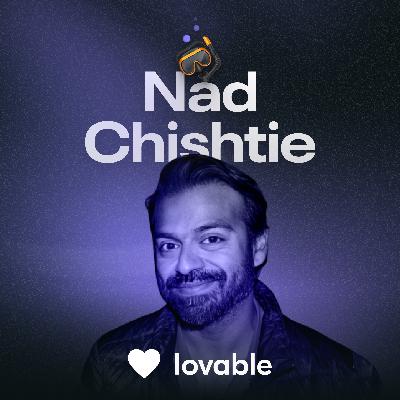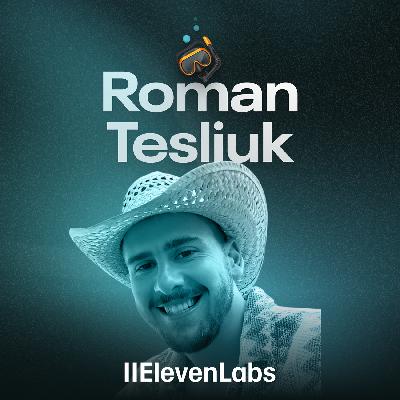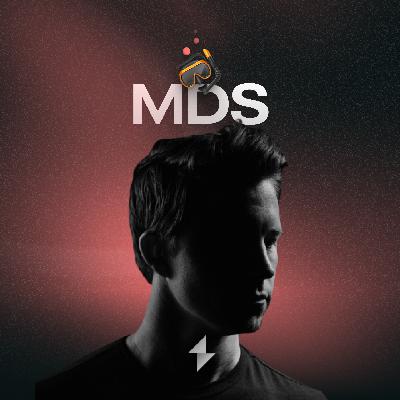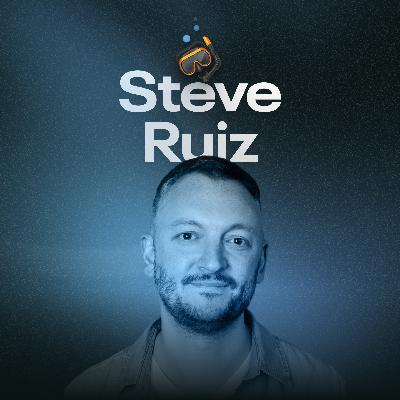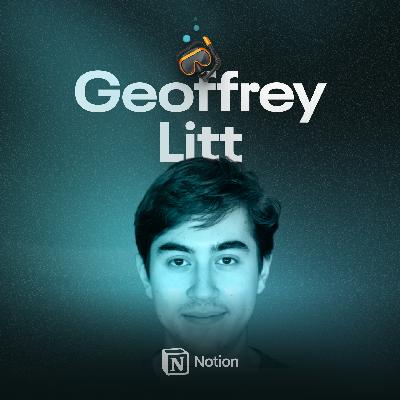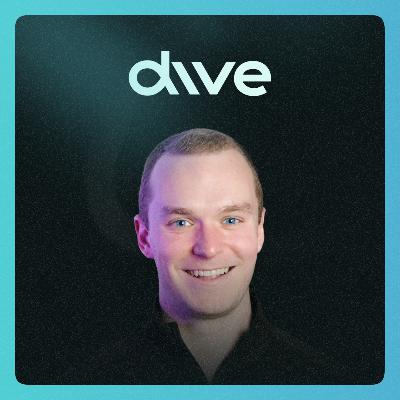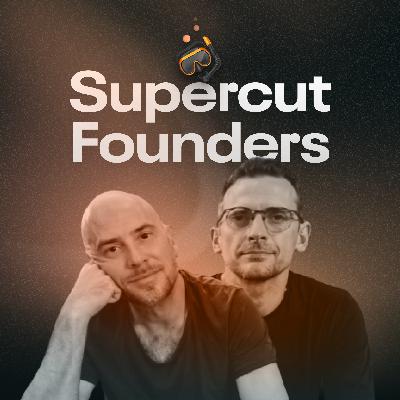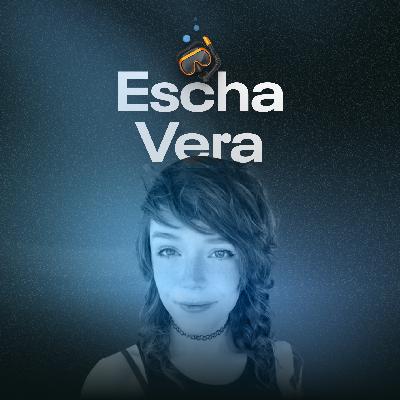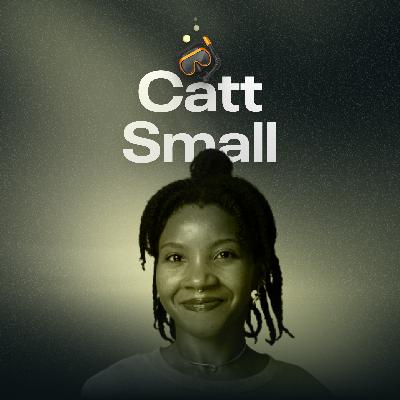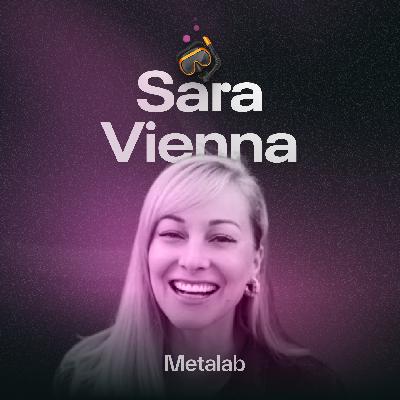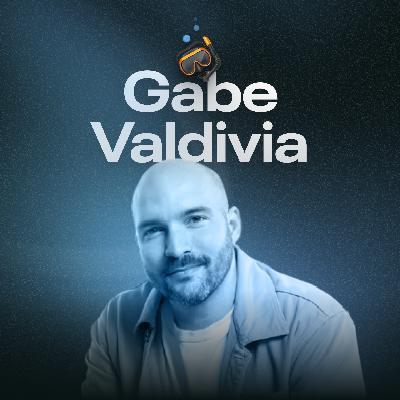Discover Dive Club 🤿
Dive Club 🤿

Dive Club 🤿
Author: Ridd
Subscribed: 48Played: 1,034Subscribe
Share
© Dive
Description
Where designers never stop learning 💪
Dive Club is an interview series hosted by Ridd that is designed to unlock knowledge from today's most prolific designers. We go deep into craft, storytelling, tools, design engineering, startups, and much more.
You can find all of the episodes, key takeaways, and bonus resources here 👉 Dive.club
173 Episodes
Reverse
As one of the fastest growing companies in the world, Lovable is scaling their design team by tapping into the [Dive Talent Network](https://www.dive.club/talent-network).So I interviewed their Head of Design, [Nad Chishtie](https://x.com/nadonomy), to learn everything I can about how to get hired as a designer at Lovable.Some highlights:- A breakdown of a recent design hire’s portfolio- How to avoid getting your portfolio screened out- How to crush the later stages of the hiring process- How you can win Nad over with side projects alone- What to do if you’re not confident in your visual skills- The 2 things Nad cares most about when hiring designers- Spotify’s cross-functional squad model (https://medium.com/found-ation/agile-team-organization-a-deep-dive-on-the-spotify-model-f5b32dfc37dd)- Matt’s portfolio (designer hired through Dive Talent Network) (https://www.lfs.gd/)
What does it look like to own web design for one of the fastest growing AI companies in the world?And how do you get that opportunity if you don’t have companies like Apple or Airbnb on your resumé?That’s what this episode with [Roman Tesliuk](https://x.com/RomaTesla) is all about.He walks us through the Eleven Labs Figma and talks about the tiniest of design decisions all the way to how he’s building a scalable website system.We also go deep into Roman's side projects and all of the ways he's becoming a builder with AI 💪Roman’s App Stacks project - https://appstacks.club/ and portfolio site - https://pixelwrld.co/
I’ve probably learned more about visual design from MDS than anyone in the design community.So I wanted to go deep into the creative process behind the all-new Shift Nudge website to see how he explores visual ideas.He takes us through his Figma file that is full of very good ideas that didn't ship.And he even shows us how he built his own Mosaic tool in v0 which became the core motif of the site.So if you're interested in seeing the windy creative process behind one of the truly great designers today then I think you're going to enjoy this one.
I get shown a lot of tool demos and one thing is clear…Canvas-based UX will play a pivotal role in how we interface with AI.It’s a big reason why Figma just bought Weavy 👀So I interviewed Steve Ruiz who is the founder of tldraw where he's spent over 3 years and $5 million dollars building the perfect canvas (which powers many of the startups that we've studied on this show).Some highlights:Why he’s been obsessing over fairiesSteve’s principles for good tool designHow he was able to learn to code so quicklyWhat Steve’s learned through his AI experimentsHow he’s thinking about the future of agentic designa lot more
In one of the most popular episodes yet, Vitaly Friedman talked about what’s next for AI design patterns (https://www.dive.club/deep-dives/vitaly-friedman).In that episode he frequently referenced Shape of AIl (https://www.shapeof.ai/) which is an incredible database of AI design patterns.So I wanted to get to the source and go deep with the creator Emily Campbell (https://www.linkedin.com/in/emmiecampbell/) to learn how to design great AI experiences. Because she’s studied AI products more than just about anyone I’ve ever seen 👀Some of my favorite highlights:- Ways to build trust in agentic products- Her favorite patterns for enhancing prompts- The traits she looks for when hiring AI designers- + a lot more- Shape of AI (https://www.shapeof.ai/) (her database of patterns)- Poke app (https://x.com/interaction/status/1965093198482866317/video/1) from Interaction
AI is fundamentally shifting the way we think about digital products and the core deliverables that we're bringing to the table as designers.So I asked Geoffrey Litt (https://x.com/geoffreylitt) (Design Engineer at Notion) to share his vision for the future of malleable software and AI system design.Here’s some highlights:- The keys to effective system design- Geoffrey’s workflow for “working like a surgeon”- Why too many products become “nightmare bicycles”- The principles of malleable software vs. disposable software- Why version control is the most important AI interaction problem- Inside Geoffrey’s malleable software experiments at Ink & Switch- + a lot more-[Ink & Switch is the research lab (https://www.inkandswitch.com/)- Changing Minds by Seymour Papert (https://worrydream.com/refs/Papert_1980_-_Mindstorms,_1st_ed.pdf)- Geoffrey’s nightmare bicycle article (https://www.geoffreylitt.com/2025/03/03/the-nightmare-bicycle)- Don Norman’s Living with Complexity (https://www.amazon.com/Living-Complexity-Press-Donald-Norman/dp/0262014866)- Spell Burst by Tyler Angert (https://spellburstllm.github.io/)- A Pattern Language by Christopher Alexander (https://www.amazon.com/Pattern-Language-Buildings-Construction-Environmental/dp/0195019199)- Patchwork - Geoffrey’s collaboration environment at Ink & Switch (https://www.inkandswitch.com/patchwork/notebook/)⭐️ You can use the code DIVECLUB to get 20% off your first month of Lovable Pro 1!
Craft gets you hired.But business impact gets you promoted.So this week’s episode with [Ryan Scott](https://www.linkedin.com/in/ryanscottcreative/) is a deep dive into how designers can think strategically about their career.He shares a ton of lessons from his [PM Masterclass for designers](https://join.dive.club/ryan-scott-pm-masterclass-affiliate):- What it looks like to grow your product muscles- The right (and wrong) ways to get buy-in for your ideas- Strategies for making data a part of your design practice- Ways to spot new strategic opportunities for your company- How to position your work to be compelling to a business leader- What Ryan learned making big ideas happen at Airbnb and Doordash- + a lot more⭐️ Get $100 off Ryan’s course when you us the code DIVECLUB- Andy Budd’s talk in Berlin (https://www.youtube.com/watch?v=8eYH6Z3LmhU)- Builder.io (http://builder.io/) mentioned as AI tool for engineers- booking.com (http://booking.com/) vs Airbnb competitive positioning example
Board (https://board.fun/) has taken over social social media (and for good reason).It’s one of the most obvious yet innovative products I’ve ever seen.So as soon as Kevin Twohy (https://x.com/kevintwohy) shared a preview with me I knew we had to do an interview to get the behind-the-scenes (spoiler: I did buy it lol).So this episode is a deep dive into his design process for the first ever tabletop game console:- What he learned about prototyping hardware products- How they figured out the “brand moves” for Board- How Kevin makes the most of AI tools- + a lot moreKevin referenced Mike and Chara Smith’s episode talking about “brand moves” multiple times - https://www.youtube.com/watch?v=Jhxx6yK2J08&t=392s
AI is reshaping how we design and build software, creating huge opportunities for designers who experiment, adapt, and help define what the practice looks like next. This session is your opportunity to learn directly from some of the best in the industry.
Imagine a world where handoff no longer exists and designers are moving fluidly in code…[Drew Wilson](https://x.com/drewwilson) is one of the people pulling that future into the present so this week’s episode is a deep dive into his vision for the new design tool [Opacity](https://opacity.app/).Some highlights:- How team structures are changing- How to stand out when everyone is a builder- What design’s “Github moment” will look like- The fracturing of the market for design talent- How Drew is approaching this startup differently- Where the new technical threshold is for designers- + a lot moreDrew is also building his new IDE called Loop - https://loupe.build/
Over the last few months one product has risen to the top of my inspiration list… ツSupercut (https://supercut.ai/)The point of this episode is to figure out what it takes to consistently reach that level of excellence.How do you maintain that level of attention to detail while preserving the speed that you need to hit when going 0 -> 1 on a new product?This week's episode is with David (https://x.com/okuiux?lang=en) and [Neil](https://x.com/neiltak) the cofounders of Supercut which has quickly become one of my favorite pieces of software in my stack.So we're going deep into how they work, how they think about product, and all of the little decisions they make that together create a truly excellent user experience. 👇- When design works in Figma vs. in code- How AI + small teams changes the design process- Supercut’s playbook for achieving design excellence- Strategies for weaving AI into the fabric of a product- Specific examples of how they sweat the details with animations- Float (https://float.build/)- Supercut (https://supercut.ai/)- Soleio (https://x.com/soleio)- Typeform (https://www.typeform.com/try/typeformbrand?&tf_campaign=US_CA-Brand-Core-English-Combined+Exact-Negs-US_23072929907&tf_source=google&tf_medium=paid&tf_content=187015558460_712286961333&tf_term=typeform&tf_dv=c&tf_matchtype=e&tf_location=9191275&gad_campaignid=23072929907&gbraid=0AAAAADLdz00gdIHfhkPP72sgfJ9L3UUg_)
We’re talking about craft in B2B SaaS... but what is it like designing for frontier interfaces like the Apple watch or even neural interfaces?We find out in this week’s episode with Rooz Mahdavian. (https://x.com/roozm)He’s the design engineer at Neuralink so we're about to get pretty nerdy and talk about what it’s like designing an experience that allows someone to use a computer with just their mind.The level of detail and first-principles design thinking is truly impressive.Some highlights:- What it looks like to design for delight in neural interfaces- What Neuralink is looking for in their 2nd design engineer role- What it takes to design frontier interfaces at Apple and Neuralink- The evolution from Apple Watch Siri face to brain-computer interfaces- Rooz’s vision for “daydreaming with computers” and direct visual imagery transfer- Reimagining a cursor for a neural interface - from color-based feedback to circular reticles- + a lot more- Apple Watch Faces team (https://www.youtube.com/embed/oaqHdULqet0?start=585&end=705&autoplay=1&controls=0)- Siri Watch Face (intern project that shipped) (https://www.youtube.com/embed/oaqHdULqet0?start=585&end=705&autoplay=1&controls=0)- Neuralink (https://neuralink.com/) - brain computer interface company- Blindside - Neuralink’s vision restoration project (https://neuralink.com/trials/visual-prosthesis/)
Imagine it’s your first day as a designer at Perplexity... and the VP of Design hands you the keys for their all-new AI browser, [Comet](https://www.perplexity.ai/comet).That’s the story for [Escha Vera](https://x.com/eschadiol).So this week’s episode is a deep dive into her design process and what it looks like to use AI like an artist.- How she designed Comet onboarding experience- Creating generative invite codes using multiple AI tools- How she created the Perplexity design system from scratch- How she productized AI without leading with chat interfaces or prompts- What are her principles for designing AI experiences that prioritize usability- + a lot more- [Soleio](https://www.dive.club/deep-dives/soleio-2) sent the intro to [Henry Modisett](https://www.dive.club/deep-dives/henry-modisett)- She worked at [Descript](https://x.com/descriptapp) before joining [Perplexity](https://x.com/perplexity_ai)- Previously worked on [Daylight Computer](https://x.com/daylightco) and Motif- Collaborating with [Phi Hong](https://www.dive.club/deep-dives/phi-hoang) on branding at Perplexity- Uses [Suno](https://suno.com/home?wpsrc=Google%20AdWords&wpcid=22042553892&wpscid=173890219393&wpcrid=726251362516&wpkwid=kwd-2827037661&wpkwn=suno&wpkmatch=e&wpsnetn=g&gad_campaignid=22042553892&gbraid=0AAAAA9pWpduFan7icL90FczgyQploCsYi) for music generation and remixing
What does the perfect e-commerce platform look like in an AI era?That’s the question Shopify’s Chief Design Officer Carl Rivera has set out to answer so this week’s episode is all about Shopify’s big bet on design and craft as the ultimate differentiator.We go deep into:- What happens when AI makes everyone a 7/10 designer- What most design teams get wrong when casting vision- How design can lead the creation of truly native AI experiences- Why every designer at Shopify is learning to ship to production- Carl’s thesis for why designers are severely undervalued in the market- Why Shopify acquired Molly Studio and what it means for how the org works- + a lot morehttps://www.molly.studio/ - design studio acquired by Shopify
Only a select few have multiple episodes on Dive Club and today Catt Small joins the ranks.She has a gift for turning messy ideas into practical next steps so it’s no wonder her Staff Designer course is one of the top-rated on Maven.In this episode we go deep into all of the ways you can make an impact by building influence on your team and effectively casting vision for your product.Some highlights:The 2 ways to measure your influenceStrategies for getting distribution for your ideasHow to select the ideal format for casting a visionStorytelling tactics used by the best staff designersHow to strategically invest in workplace relationshipsWhat Catt learned while interviewing staff designers for her new book⭐ Get $100 off Catt’s course: Staff Designer: Influence & Lead as an Individual Contributor⭐ Get 15% off pre-orders for her new book: The Staff Designer
What does it take to make people feel something with design...?This week's guest is kind of an expert on the question. Sara Vienna (https://x.com/sravienna?lang=en) , the Chief Design Officer at Metalab, talks about the responsibility that designers have to shape this AI world that we're entering without losing the heartbeat of a brand.We don't hold back on the current state of the industry and what it feels like to be a designer today.Some highlights:- How to not get swept up in current design trends- How Metalab has adopted AI workflows internally- Strategies for leveraging AI to understand research data- What it takes to put meaning at the heart of a brand/product- How Metalab invests in the collective taste of the design org- Where Sara derives signals and how she filters out the noise- Being late on a trend is bad taste even more so than ugly design- + a lot more- Windsurf https://windsurf.com/) and [Suno](https://suno.com/home?wpsrc=Google%20AdWords&wpcid=22042553892&wpscid=173890219393&wpcrid=726251362516&wpkwid=kwd-2827037661&wpkwn=suno&wpkmatch=e&wpsnetn=g&gad_campaignid=22042553892&gbraid=0AAAAA9pWpduFan7icL90FczgyQploCsYi) rebrands- Jony Ive’s Stripe Sessions talk (https://stripe.com/sessions/2025/a-conversation-with-sir-jony-ive)- Erica Hall’s book “Just Enough Research” (https://www.mulebooks.com/just-enough-research)- Anthropic’s Machines of Loving Grace paper (https://www.darioamodei.com/essay/machines-of-loving-grace)- Blok for focus (https://blok.so/)
I think we're entering a world where the market for fractional design is about to explode…So this week's episode is with one of my favorite people in the industry, Gabe Valdivia.We're going to explore his independent journey → how he made the jump, how he's evolved the practice in year two, and all of the lessons he's learned along the way.Some highlights:Gabe’s three-phase client modelHow to sell a client on fractional designGabe’s rules of thumb for pricing himselfHow Gabe’s new apprenticeship program worksHow Gabe vibe-coded his personal Freelance OSHow he has redefined success from year 1 to year 2Gabe’s journey to figure out how to position himself as an independenta lot moreCharlie Sutton who he worked with on VR team at FacebookTeam Human book by Douglas Rushkoff
Too much of designing a startup happens behind closed doorsSo I want to work with the garage door open while building Inflight (https://www.inflight.co/) as much as possible.You already saw a bunch of the nitty gritty UI details (https://www.youtube.com/watch?v=D39Dv9MSlhs)…But when you’re going 0 to 1 on something, the storytelling piece is often the hardest part.So this episode is a sneak peek of a recent presentation we gave in SF (and some behind-the-scenes commentary to go along with it).
What does it look like to advance your career in the age of AI? That’s what this week’s episode with Dan Winer (Director of Product Design at Kit) is all about. He shares insights from his top-rated Maven course "Strategy and Influence for Product Designers" (https://join.dive.club/dan-winer-course) So if you want to learn how to go from pixel pusher to strategic partner then this is the episode for you 💪Some highlights:- Dan’s strategies for effective storytelling- How to shine a light on the value of your work- Tactics for building alignment across key stakeholders- The 8 skills that Dan is evaluating in the hiring process- Why design systems are becoming more important than ever- Harsh truths designers don’t want to hear about their portfolio- What to do if you don’t have data to prove the impact of your work- + a lot more
This week's episode is with Andy Zhang who was the lead design engineer at Windsurf. So we're going to shine a light on all of the ways you can make an impact as a design engineer including:Owning more of the frontend polishThinking through design patterns and packaging featuresBridging the gap between technical features and intuitive UXSaying “no” to features to preserve the simplicity of the systemHe also shares some great stories and advice including:What it was like working as an intern at Figma with <10 peopleHow designers can start to get more comfortable with codeHow he taps into his experience as a PM at Uber while selecting the right design processa lot moreRasmus Andersson (https://x.com/rsms) - Designer/engineer at Figma, mentor to AndyKevin Hou (https://x.com/kevinhou22?lang=en) - Lead product engineering at Windsurf, Andy’s basketball teammate who helped him get the job


